Cycling's ultimate dress rehearsal - How E3 Saxo Classic predicts the Tour of Flanders
Test run in Flemish Ardennes provides key pointers for the Ronde
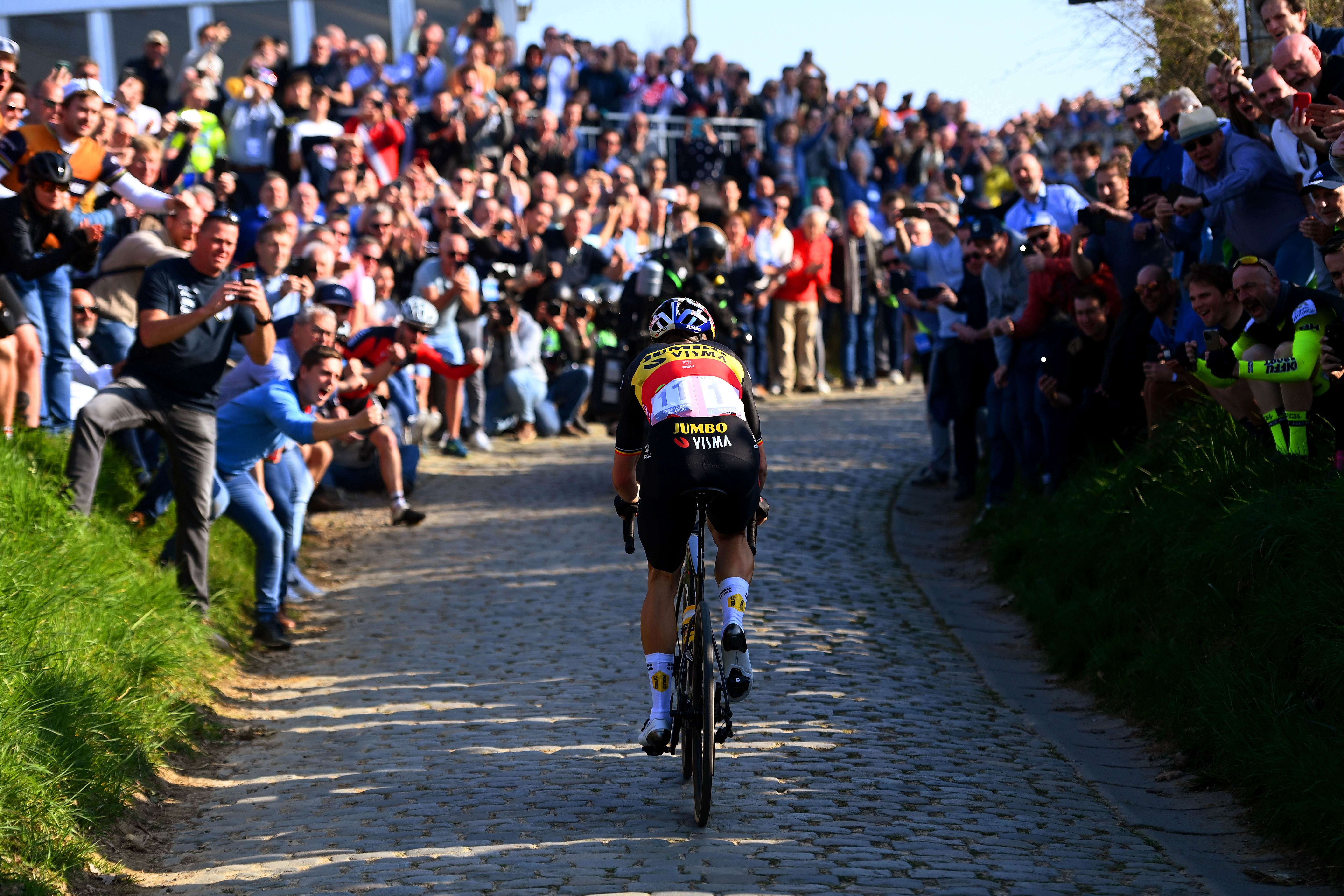
The 2010 edition of E3 Harelbeke – as the E3 Saxo Classic was called back then –looked to be rolling towards a familiar denouement when Tom Boonen, Fabian Cancellara and Juan Antonio Flecha approached the outskirts of town after having forged clear on the Paterberg 40km or so earlier. Boonen had already won the race four times in a row between 2004 and 2007, and a three-up sprint and another Tommeke triumph seemed inevitable here.
In hindsight, it was the moment E3 Harelbeke went electric.
Just outside the flamme rouge, Cancellara surged unexpectedly and opened a small gap that Boonen, sprinting with all his might, couldn’t stitch back together. Two metres became ten and by the time Boonen sat back into the saddle the balance of power for the following week’s Tour of Flanders had shifted completely.
Cancellara freewheeled across the line as the winner, while Boonen beat Flecha to second. The Belgian champion put a brave face on his performance in public – “My form is more than alright,” he insisted – but in private, it was a sobering preview of what awaited him at the Ronde.
A week later at the Tour of Flanders, Boonen and Cancellara again found themselves in the winning move, this time without Flecha. Boonen knew what was coming and he probably knew there was nothing he could do to stop it either. Cancellara cruised clear on the Muur with the acceleration that launched a thousand YouTube videos. Boonen strained to follow, but he was a beaten man. In truth, he had already spent a week staring at the writing on the wall after the dress rehearsal in Harelbeke.
It wasn’t always that way. For the first dozen years after its establishment in 1958, the race was known as Harelbeke-Antwerpen-Harelbeke and often lent itself to sprinters. From 1970, it took on the E3 moniker and the route gradually started to veer further into the Flemish Ardennes. But even though the roll of honour was always weighty – the 20th century palmarès includes cobbles grandees like Rik Van Looy, Jan Raas and Roger De Vlaeminck – its status as the pointer of Tour of Flanders form only really began to take shape in the late 1990s.
In 1998, Johan Museeuw became the first rider to complete the E3 Harelbeke-Tour of Flanders double, a feat matched by Boonen in 2005 and 2006 and by Cancellara in 2010. By then, the prestige of the race had long since outstripped its HC status. From 2012, E3 Harelbeke was promoted to the WorldTour, moving a day earlier on the calendar to provide some respite for those riding Gent-Wevelgem.
Get The Leadout Newsletter
The latest race content, interviews, features, reviews and expert buying guides, direct to your inbox!
The switch also coincided with the introduction of the new Tour of Flanders finale over the Kwaremont and Paterberg. In the ten editions since, E3’s reputation as the essential Ronde tune-up has only been cemented further. Small wonder that Tadej Pogacar (UAE Team Emirates), a Ronde debutant a year ago, has opted to line out at Friday’s E3 Saxo Bank Classic against Mathieu van der Poel (Alpecin-Deceuninck), Wout van Aert (Jumbo-Visma) and company.
E3 Harelbeke – this year bearing the E3 Saxo Classic banner – may be some 70km shorter than the Ronde, but the sixteen climbs give it a staccato rhythm similar to that of the main event. In recent seasons, meanwhile, the open, aggressive racing once more typical of the shorter E3 has increasingly been replicated at the Ronde itself.
But no matter how the race unfolds, the truths uncovered by E3 Harelbeke have consistently been borne out a little over a week later. With that in mind, Cyclingnews casts a glance back over the ten WorldTour editions of the crystal ball of the Classics.
2012 – E3 winner: Tom Boonen. Tour of Flanders result: 1st
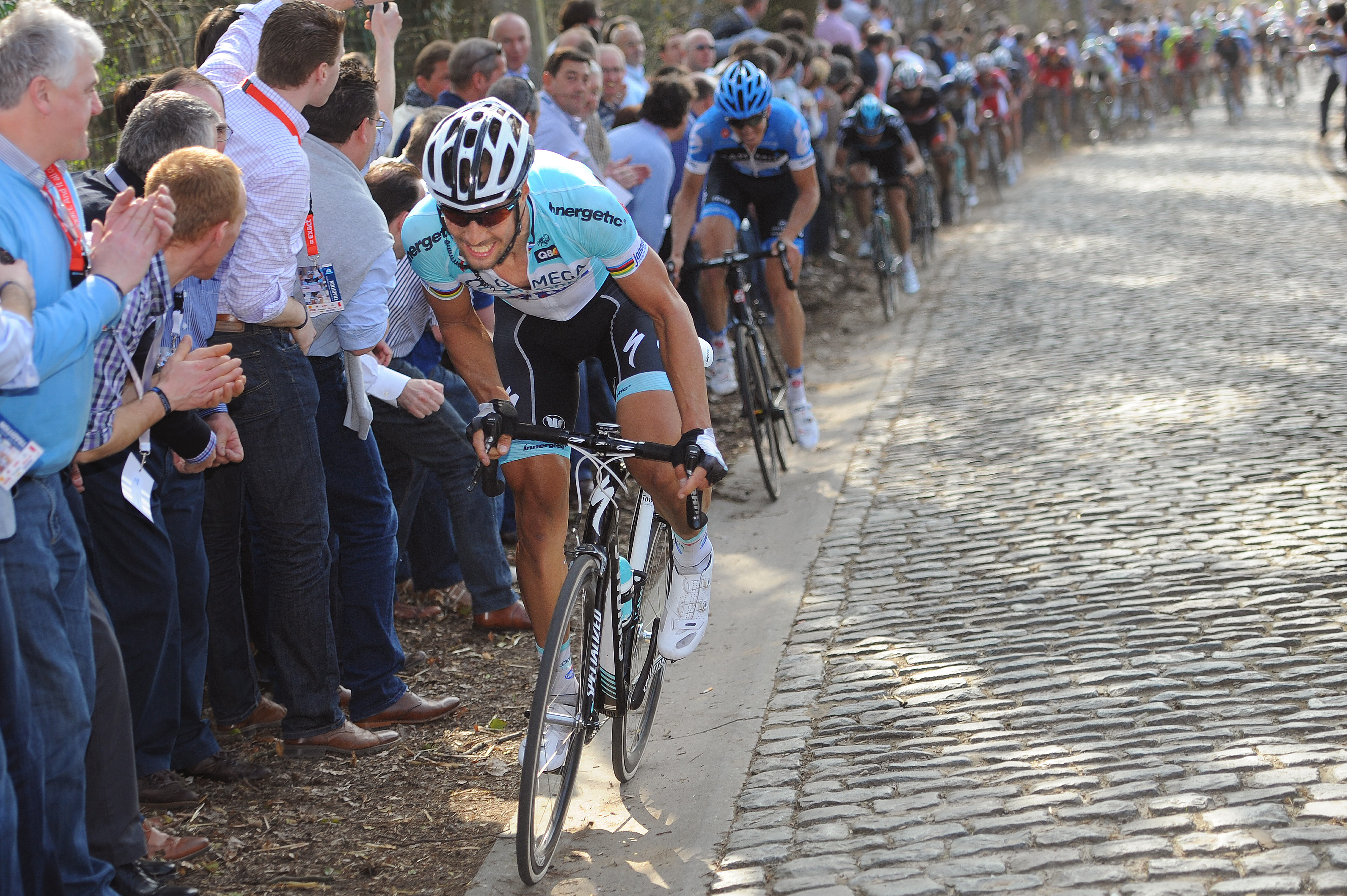
The first WorldTour edition of the race saw the addition of the Muur van Geraardsbergen to the route, even if the hallowed climb came too far from the finish to see a reprise of the Cancellara-Boonen duel, and their skirmishes instead came on the Paterberg-Kwaremont combination. Boonen led confidently up the first climb, before Cancellara accelerated viciously on the second. Only Boonen, Filippo Pozzato, Peter Sagan and Sep Vanmarcke could follow, but the move petered out when Cancellara punctured before the top of the climb.
It was a foretaste of an ill-starred Ronde for Cancellara, whose Classics campaign would end when he broke his collarbone in a crash in the feed zone. For Boonen, meanwhile, his assured E3 Harelbeke win marked the start of the best Spring of his career, with the quality of his QuickStep squad seemingly restored after a trying pair of years.
At Harelbeke, Sylvain Chavanel was part of the late break before Boonen delivered a long, long sprint to fend off Oscar Freire. Two days later, he would win Gent-Wevelgem and his speed would carry him to victory in a three-up sprint at the Tour of Flanders after he withstood a gearing issue and Pozzato’s forcing on the Paterberg. He would add Paris-Roubaix for good measure.
2013 – E3 winner: Fabian Cancellara. Tour of Flanders result: 1st
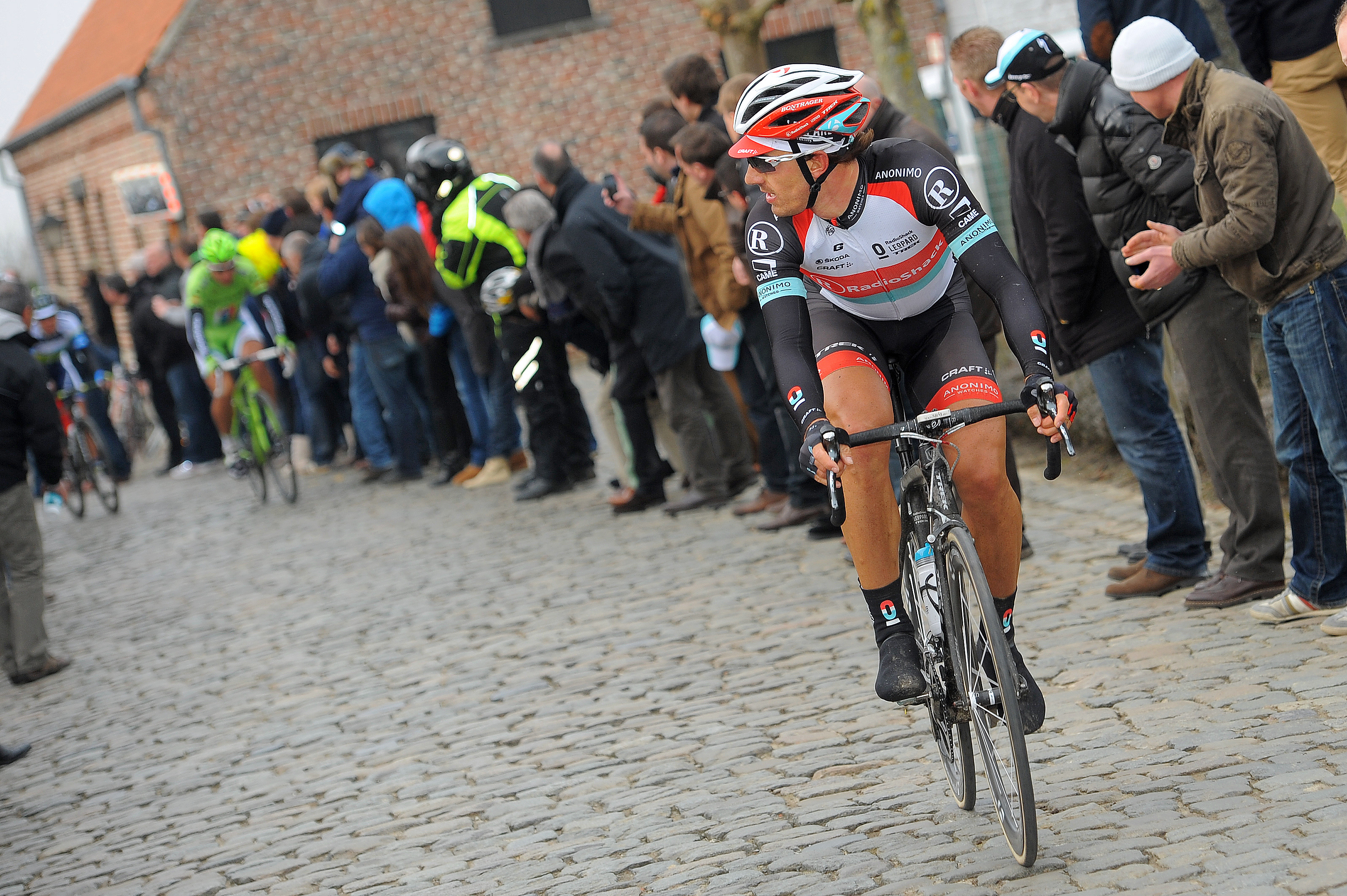
The pendulum swung decisively back in Fabian Cancellara’s favour in 2013. Tom Boonen, struggling for form after an elbow infection earlier in the year, made little impact in Harelbeke and even less at the Tour of Flanders, where he crashed out in the opening kilometres. Instead, Cancellara’s key rival that Spring looked set to be Peter Sagan after a series of jousts on Italian roads.
Like in 2010 and 2011, Cancellara knew that E3 Harelbeke presented a chance to lay down a marker, and he unsheathed a seated acceleration on the Kwaremont with 33km to go, riding Sagan off his wheel. He would win by more than a minute on a chasing group led home by the Slovakian. “We knew the Oude Kwaremont was an important key in the race, as it will be in the Tour of Flanders,” Cancellara said, with some understatement.
The only suspense now seemed to concern Cancellara’s margin of victory on Belgian cycling’s greatest day. Although Sagan would manage to hold Cancellara’s wheel when he repeated the Kwaremont onslaught at the Ronde, he would ultimately be overwhelmed on the Paterberg. Cancellara rolled home to win by some 1:27, leaving spectators with a striking sense of déjà vu.
2014 – E3 winner: Peter Sagan. Tour of Flanders result: 16th

The first of two unusually misleading editions of E3 Harelbeke saw Peter Sagan, the coming man of the Classics, claim victory in a four-up sprint from Niki Terpstra, Geraint Thomas and Stijn Vandenbergh. With the Slovakian all but confirmed to leave Cannondale at season’s end, copious column inches were being devoted to the size of his next contract in the Spring of 2014, but he had also been also the subject of fierce criticism after a subdued 10th place at Milan-San Remo.
That context perhaps explained a rather tetchy post-race press conference in Harelbeke, where Sagan appeared bemused that the line of questioning focused on his Tour of Flanders chances rather than his victory that afternoon. “Why do you always ask me these questions about the future? I am not magic, no?” Sagan said when asked what this result meant for the Ronde.
Sagan was right to be circumspect. At this stage in his development, a year shy of his first world title, he was still having difficulties over the Monument distance, and he faded in the final hour of the Tour of Flanders. Instead, Fabian Cancellara, whose E3 Harelbeke challenge was ruined by mechanical issues, summoned up a win from a four-man sprint. Vandenbergh was the only rider in the winning move at both races.
2015 – E3 winner: Geraint Thomas. Tour of Flanders result: 14th

Peter Sagan, now racing for Tinkoff, was again in the decisive break at E3 Harelbeke twelve months later, but his late struggles were a portent of things to come a week later at the Tour of Flanders. At E3, he escaped with Geraint Thomas and Zdenek Stybar on the Kwaremont, but he was unable to follow when the Welshman launched his winning effort with 4km to go. Indeed, while Stybar had the strength to hold on for second place, Sagan faded to the extent that he was caught and passed by the chasing bunch.
Despite his first big win on Belgian roads, Thomas would not make the anticipated impact at the Tour of Flanders, placing 14th, and the spoils instead fell to Alexander Kristoff. The Norwegian was bubbling under with fourth place at Harelbeke before coming to the boil with a hat-trick of stage wins and overall victory at the following week’s Three Days of De Panne. He would easily see off Niki Terpstra in the two-up sprint at the Tour of Flanders, where Sagan’s fourth place finish did nothing to insulate him from Oleg Tinkoff’s public threats to cut his salary for underperformance.
2016 – E3 winner: Michal Kwiatkowski. Tour of Flanders result: 27th
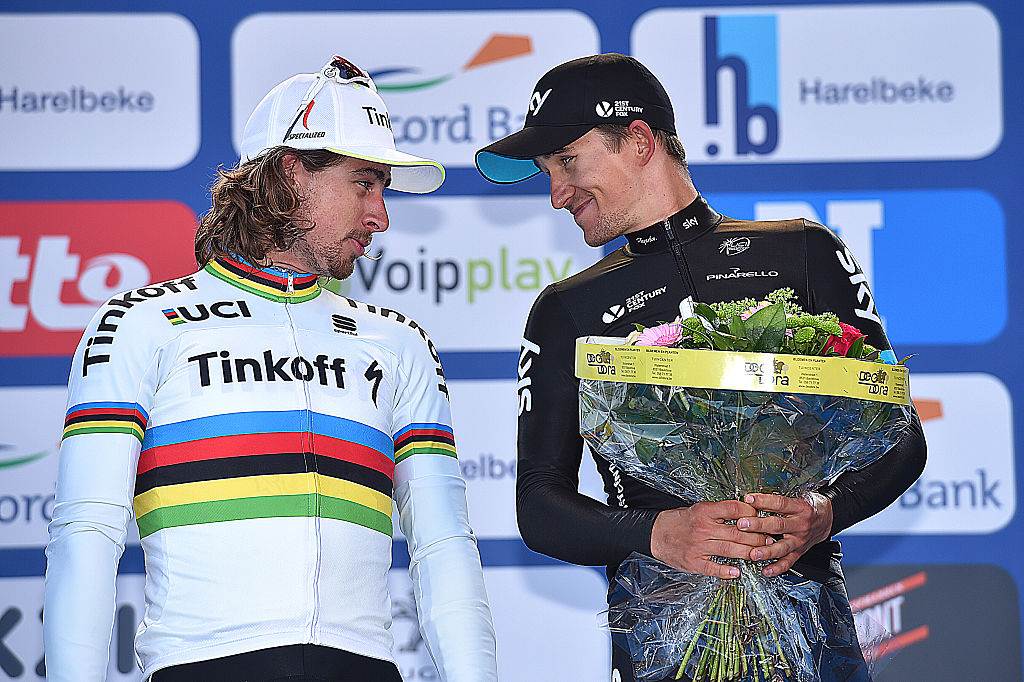
Michal Kwiatkowski was a regular bête noire for Peter Sagan, and his victory at the World Champion’s expense in Harelbeke in 2016 was the second in a trilogy that began with the 2014 Strade Bianche and ended with Milan-San Remo in 2017. Sagan had looked sharp when he pressed clear with Kwiatkowski on the cavernously steep Karnemelkbeekstraat, which made his rather blunt sprint in Harelbeke all the more surprising.
In hindsight, it was perhaps informative that Sagan was able to shrug off the defeat with a smile. “I think I did a lot of work, and I was just without legs in the final,” he laughed when seated alongside Eddy Planckaert in the makeshift Sporza studio at the finish. A local TV crew was waiting for Sagan when he emerged from the cabin. “Are you ready for the Ronde?” he was asked. Sagan shrugged: “I am preparing all the year for the Tour of Flanders.”
He was as true as his word. At the Ronde, Sagan knew that he had to track the on-form Kwiatkowski when he attacked before the Kruisberg with 32km to go, bringing Sep Vanmarcke with him. After dropping Kwiatkowski on the Kwaremont, Sagan distanced Vanmarcke on the Paterberg before holding off Cancellara on the run-in to Oudenaarde to claim the first Monument of his career.
2017 – E3 winner: Greg Van Avermaet. Tour of Flanders result: 2nd
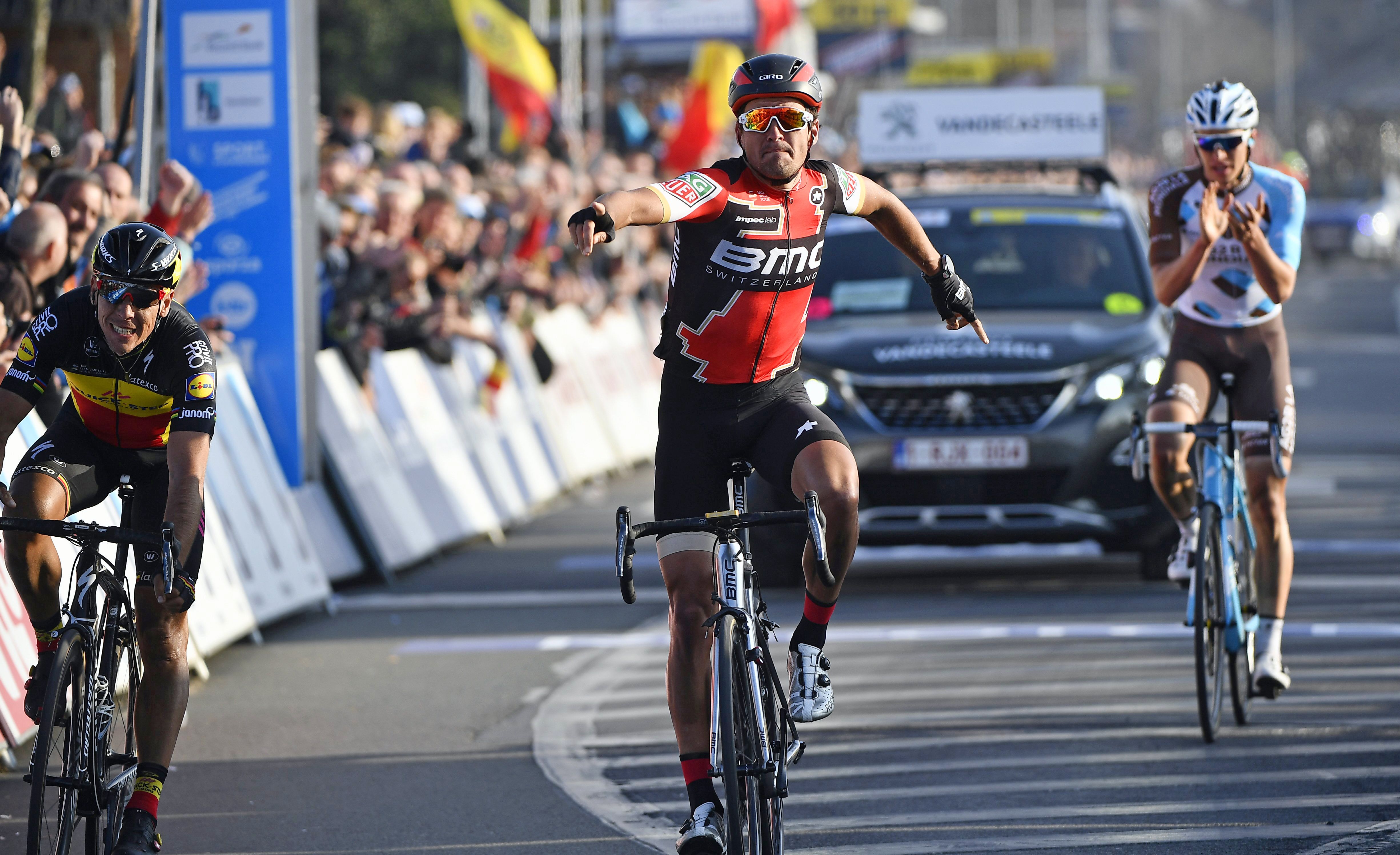
The Olympic title in Rio the previous summer earned Greg Van Avermaet the moniker of ‘Golden Greg’ and the tag of favourite for every cobbled Classic in the Spring of 2017. He began his campaign with a second successive Omloop Het Nieuwsblad win before scoring an assured victory at E3 Harelbeke. Already to the fore from the Taaienberg, Van Avermaet forged clear on the Kwaremont with Philippe Gilbert and training partner Oliver Naesen before dispatching them comfortably in the sprint.
“The Tour of Flanders is more difficult, you can’t go so early,” Van Avermaet said afterwards. “I can’t cover every move. It’s more tactical and it’s up to me to take the right decisions.”
He was half right and half wrong. The winning move at the Tour of Flanders would in fact go very early indeed, with Boonen forcing the decisive split on the Muur with 95km to go before his QuickStep teammate Gilbert went clear alone with 55km to race. Van Avermaet, on the other hand, was marooned in the chasing peloton, outflanked by QuickStep’s strength in numbers. He was unable to cover every move, but his decision to let Gilbert et al go was very costly.
And yet the race might have taken a different hue when Van Avermaet gave chase with Sagan and Naesen in the finale, only for them to be brought down when the World Champion clipped a spectator on the Kwaremont. Although Van Avermaet remounted and won the sprint for second, the day belonged to Gilbert – a man whose Harelbeke performance had itself hinted at the extent of his renaissance on joining QuickStep from BMC. Van Avermaet had the considerable consolation of winning that year’s Paris-Roubaix, but the Ronde remains elusive for him to this day.
2018 – E3 winner Niki Terpstra. Tour of Flanders result 1st
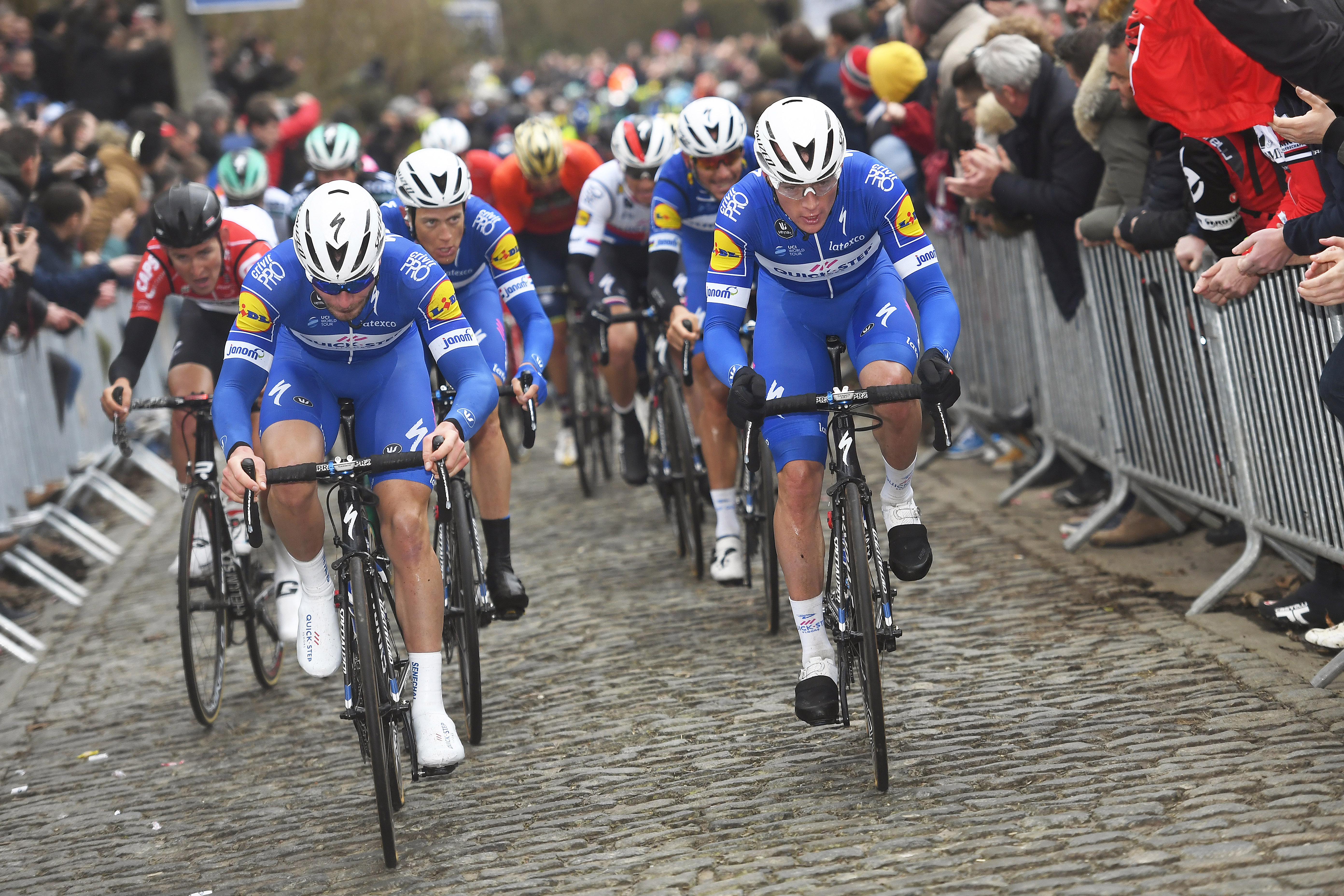
After using their numbers to good effect the previous Spring, QuickStep saw little to reason to deviate from that template in 2018, nor any reason to keep the approach under wraps at E3. On the Taaienberg, so beloved of the by-now retired Tom Boonen, QuickStep put five riders at the front. Over the summit, with 70km to go, Niki Terpstra and Yves Lampaert were clear, while Philippe Gilbert, Zdenek Stybar and Florian Sénéchal policed the chasers behind.
Terpstra would rid himself of a flagging Lampaert on the Karnemelkbeekstraat with 30km to go, secure in the knowledge that Van Avermaet, Peter Sagan et al were marooned on Gilbert Island behind. “It’s not my favourite activity. It is anti-racing in a way but, voilà, it inevitably forms part of the tactics,” Gilbert said after he sprinted to second place.
In a squad with four or five potential winners, Terpstra understood the value of getting his retaliation in first rather than finding himself hemmed in by team orders. “An individualist and a team player,” was manager Patrick Lefevere’s admiring appraisal. QuickStep simply ran the E3 Harelbeke playbook all over again at the Ronde, where Terpstra escaped on the Kruisberg while Gilbert again served as the spoiler behind.
2019 – E3 winner: Zdenek Stybar. Tour of Flanders result: 36th
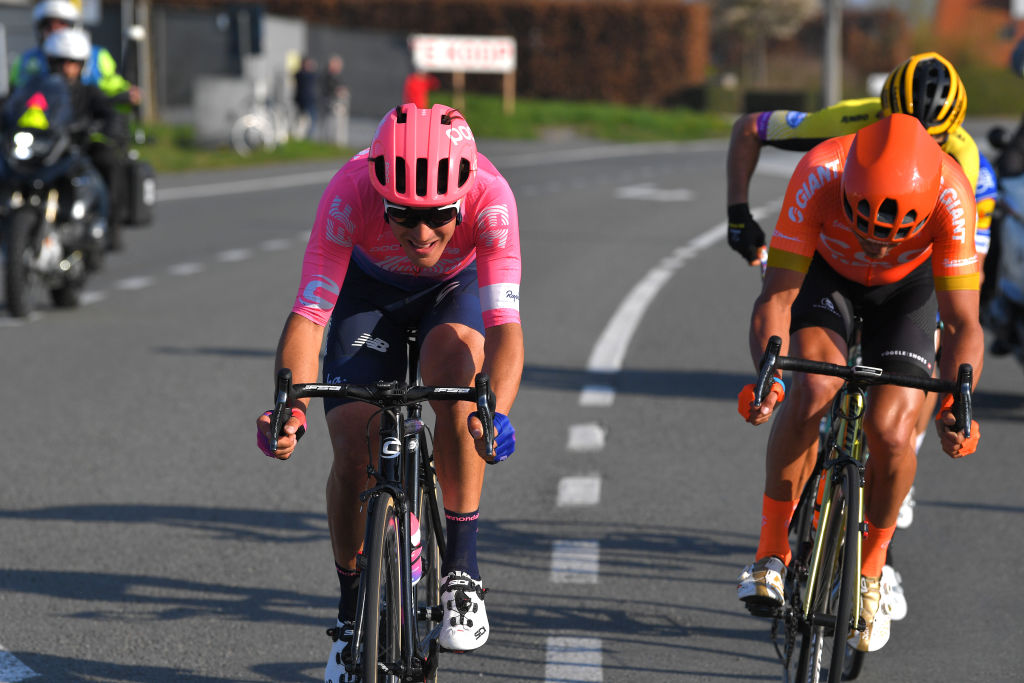
The beauty of E3 Harelbeke is that, sometimes, the winner of the Tour of Flanders is hiding in plain sight, though it was perhaps understandable that he was overlooked in 2019. QuickStep, after all, had begun the year with an imposing sequence of one-day success, annexing Omloop Het Nieuwsblad, Kuurne-Brussel-Kuurne, Strade Bianche, Milan-San Remo and Le Samyn. When Zdenek Stybar outsprinted a five-man group in Harelbeke, it simply looked as though the beatings would continue until morale improved.
Wout van Aert and Greg Van Avermaet, second and third in Harelbeke, seemed the men most likely to put up resistance to QuickStep’s depth, and few gave a second thought to the man who placed a surprising fourth, Alberto Bettiol. Flanders Classics chief Wouter Vandenhaute was even dismissive of the Italian when asked if he was concerned that a rider such as Bettiol or EF teammate Sebastian Langeveld might win rather than a more established and marketable star. “They are not going to win,” he said. Famous last words.
Buoyed by that display in Harelbeke, Bettiol rode fearlessly at the Ronde, seizing his opportunity by attacking from a sizeable front group on the Kwaremont and holding on to claim the first – and biggest – victory of his career. “I never won a race, why should I win the Tour of Flanders?” he said afterwards. Why? Because E3 had shown it was possible.
2021 – E3 winner: Kasper Asgreen. Tour of Flanders result: 1st
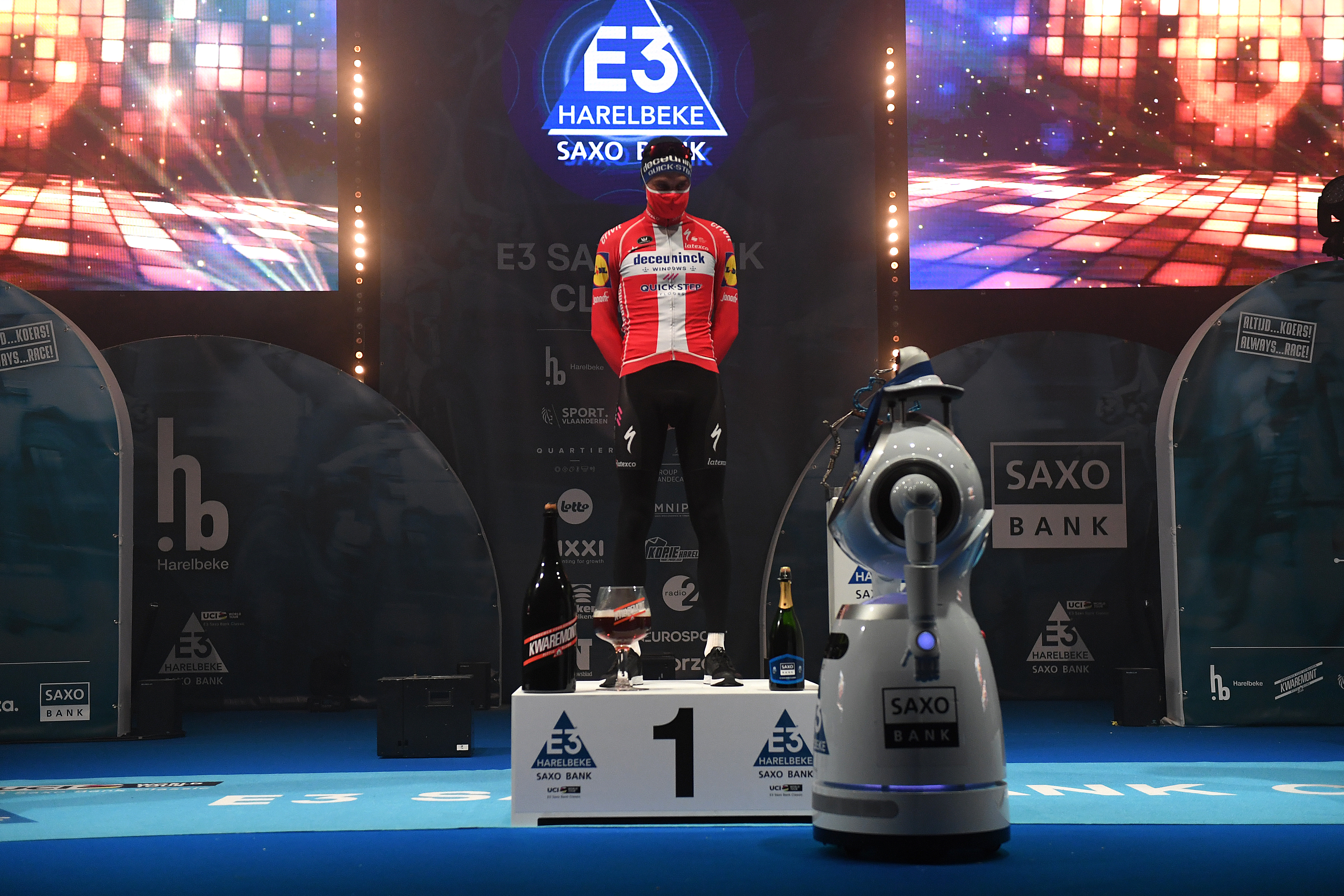
There was no E3 Harelbeke during the pandemic-interrupted 2020 season, but the race returned to its familiar spot on the calendar in 2021. The Classics campaign was billed as a clash between the extravagant individual gifts of Mathieu van der Poel and Wout van Aert on one hand and the collective force of QuickStep on the other, and that was essentially how E3 Harelbeke played out. On the run-in, Van der Poel found himself with three QuickStep riders for company in a seven-man move and he was duly outflanked once Kasper Asgreen clipped away with 5km to go. Florican Senechal even beat Van der Poel in the sprint to complete a QuickStep one-two.
A week later at the Tour of Flanders, Van der Poel must have thought he had done the hard part when he found himself alone in front with Asgreen after the Oude Kwaremont. Much the quicker by reputation, Van der Poel was the obvious favourite for the two-up sprint, but Asgreen’s E3 Harelbeke win had, in hindsight, underlined his prodigious powers of endurance.
At E3, the Danish champion had already spent 55km alone in front before he was caught by the Van der Poel group on the run-in, yet he still had the strength to go again and win. At the Tour of Flanders, meanwhile, those same qualities meant that his freshness surprisingly trumped Van der Poel’s speed at the finish in Oudenaarde.
2022 – E3 winner: Wout van Aert. Tour of Flanders result: DNS
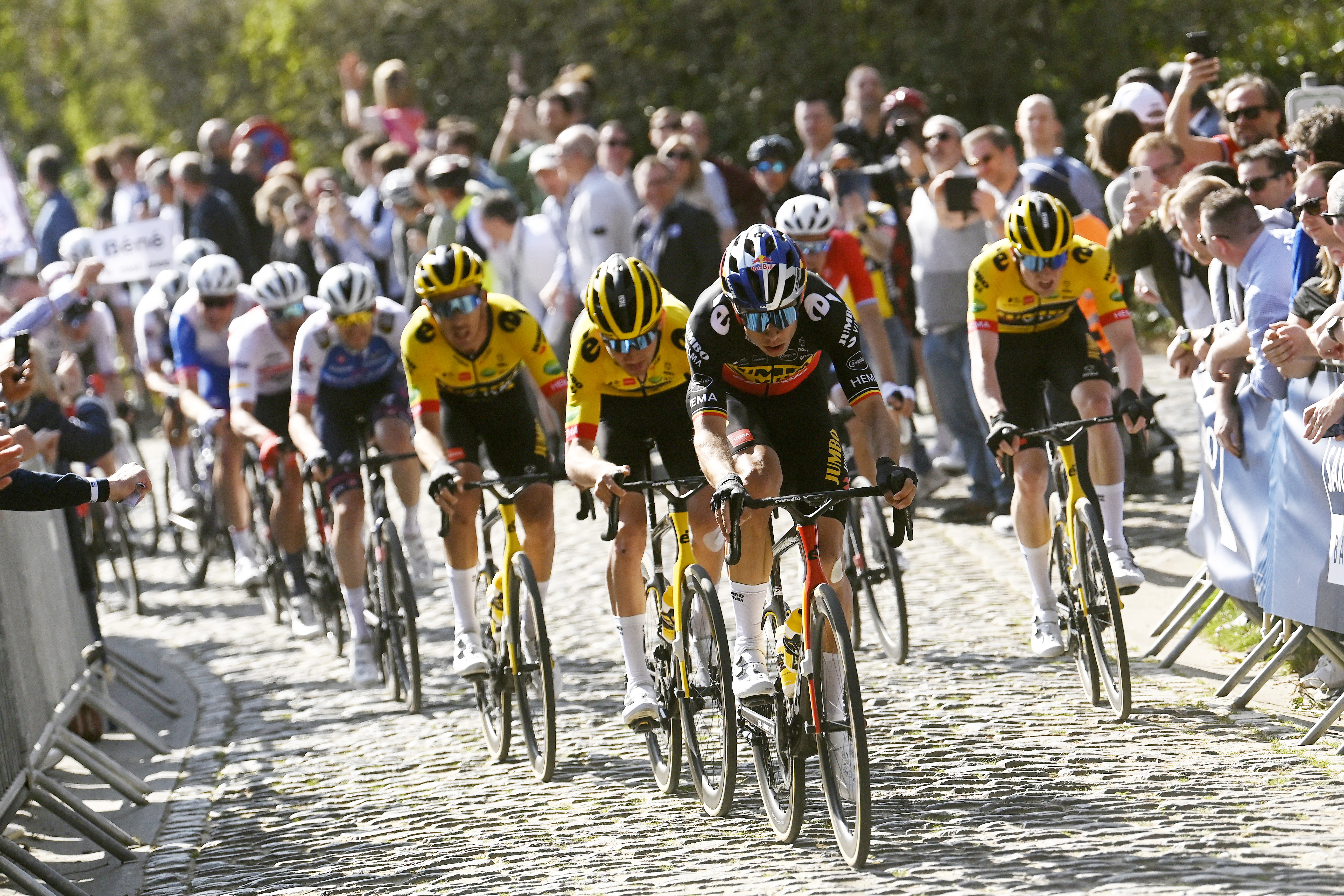
The outlier. When Wout van Aert and Christophe Laporte performed their own version of the Baracchi Trophy from the Paterberg to the finish in Harelbeke, it seemed as though the road to Tour of Flanders victory ran through Jumbo-Visma and Jumbo-Visma alone. Van Aert, already dominant at Omloop, looked untouchable as the Ronde drew near. Instead, a positive test for COVID-19 in midweek would rule the favourite out of the race altogether.
In Van Aert’s absence, Mathieu van der Poel and Tadej Pogacar produced a Tour of Flanders for the ages. That in itself was a curiosity, as neither rider had lined out at Harelbeke at all, with Van der Poel instead opting to top up his form at the Settimana Coppi e Bartali.
Harelbeke still provided some pointers for the days ahead, with Stefan Kung (3rd) and Biniam Girmay (5th) both underlining their development, but Van der Poel was the first Tour of Flanders winner to skip E3 since Andrea Tafi in 2002. It may well be two decades before the situation presents itself again.

Barry Ryan was Head of Features at Cyclingnews. He has covered professional cycling since 2010, reporting from the Tour de France, Giro d’Italia and events from Argentina to Japan. His writing has appeared in The Independent, Procycling and Cycling Plus. He is the author of The Ascent: Sean Kelly, Stephen Roche and the Rise of Irish Cycling’s Golden Generation, published by Gill Books.